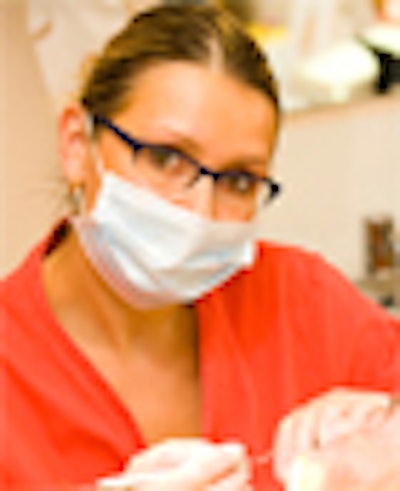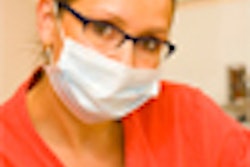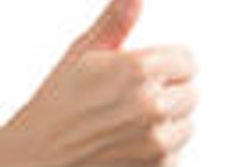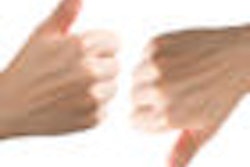
Should dental hygienists be allowed to set up their own, separate practices and provide certain kinds of dental care? That's the issue under hot debate in Minnesota these days. A bill (HF3247) that calls for the creation of advanced dental hygiene practitioners (ADHPs) has already passed the House Licensing Subcommittee. Its companion bill (S.F. 2895) is being discussed in the state Senate.
Under the bill, an ADHP could perform traditional preventive services, such as cleanings, as well as therapeutic, palliative, prescriptive, diagnostic, and minimally invasive restorative services. The latter would include fillings and extractions; crowns; pulpotomies on primary teeth; prescribing, administering, and dispensing medications for infections and pain management; and more.
Strictly speaking, these services could be provided by an ADHP without the patient first being examined by a dentist, without the presence of a dentist, and at a location where a dentist is not present.
ADHPs must not only be licensed dental hygienists, but would be required to obtain a master's degree specially designed for them and pass a comprehensive clinical examination developed in consultation with the Board of Dentistry.
Does this mean that for all intents and purposes hygienists will be able to set up an independent practice? No, insists Mary Beth Kensek, president of the Minnesota Dental Hygienists' Association.
"It's not about practicing independently. It's about creating a new model of service -- much like the nurse practitioner -- to improve access to care," she told DrBicuspid.com.
Hygienists will still work in collaboration with dentists -- if they want to.
"Hygienists may enter into an agreement with dentists to provide specific services in unsupervised settings," Kensek said in a press release. "ADHPs will use an established referral mechanism to facilitate care for patients in need of additional treatment outside their scope of practice."
The Minnesota state Senate has asked for some modifications to the bill which will reduce the current level of independence hygienists are seeking.
The ADA has its reservations about the bill. In a recent statement, the ADA urges "lawmakers to reject this legislation and work with the dental community on a more workable solution."
The statement argues that the ADHPs would lack the training and education needed to safely complete many of the proposed dental procedures.
"As an example of the risk involved ... proponents ... assert that ADHDs will perform only "simple" surgical procedures. As almost any dentist will attest, there is no such thing. Any filling, pulpotomy, or extraction can appear uncomplicated at first look but then can become complicated quite quickly," the statement claims.
The Minnesota Dental Association (MDA) is in complete agreement with the ADA. In a March 3 statement, the MDA voiced "grave concerns" about the bill and said that, "this hasty and drastic measure puts patients' safety at risk."
"Under this legislation, an ADHP would be allowed to cut and drill in any patients'; mouths without a dentist present in the building. This is an unprecedented proposal -- nowhere in the U.S. has such an extreme change permitted dental hygienists to perform surgery without a doctor being present. "
The MDA also argues that the proposed ADHP program would not be accredited by the ADA's Commission on Dental Accreditation (CODA), which has been the standard third-party accrediting entity for dental schools, as well as dental hygiene and dental assisting programs, for decades.
"This proposal greatly expands the scope of practice for dental hygienists, while requiring less than half of the advanced training that dentists receive," according to the MDA statement.
The ADHP model has been proposed as a way to provide access to oral care for millions of uninsured Americans, especially those in rural areas, inner cities, and suburbs, explained Kensek.
"We are trying to meet the needs of people before they end up in emergency rooms because they could not get primary care," Kensek said. "We are not looking at the population that is insured. We are looking at a population that no one is seeing right now."
The idea isn't new. New Zealand, Canada, and Britain already have similar programs, as does Alaska, but only on tribal lands. (These programs, which certify dental health aid therapists or DHATs, require two years of coursework.)
It is unlikely that any other state will introduce legislation to establish a ADHP program in 2008, according to the American Dental Hygienists' Association (ADHA). However, many states are likely to consider it in the future. Already, legislation (HB 1487) regarding the creation of ADHPs is pending before the full House in New Hampshire.
Currently, 23 states allow patients direct access to dental hygiene services, while 12 allow hygienists to be directly reimbursed under Medicaid. A few states even allow hygienists to perform some restorative duties.
"The ADHP represents a natural progression in practice to meet the growing oral healthcare needs of Americans, particularly in states that already allow for progressive dental hygiene practice," the ADHA said.
However, the ADA is concerned that the ADHP legislation offers no tangible solutions to the access-to-care problem. "As there are no limitations on where an ADHP could practice, why would you assume that they would work in underserved areas?"
The MDA has also expressed concern that the bill does not require ADHPs to serve in underserved areas.
The MDA's final word: "The MDA urges lawmakers to support existing programs already in place to expand access, rather than reach for such a drastic and unwise bill."



















